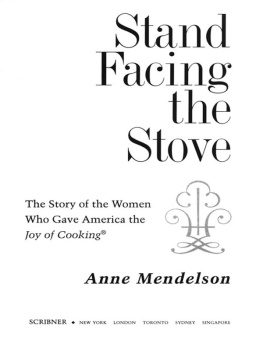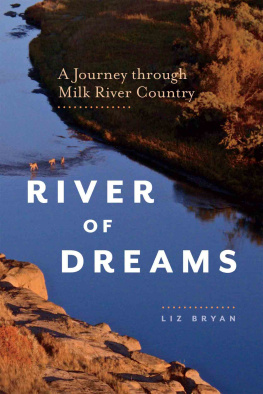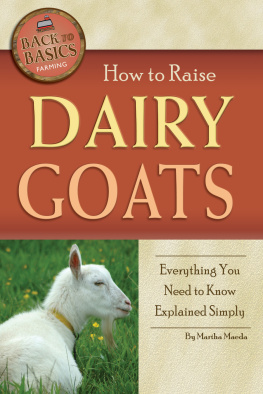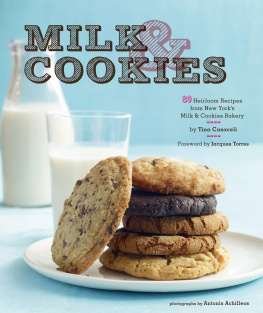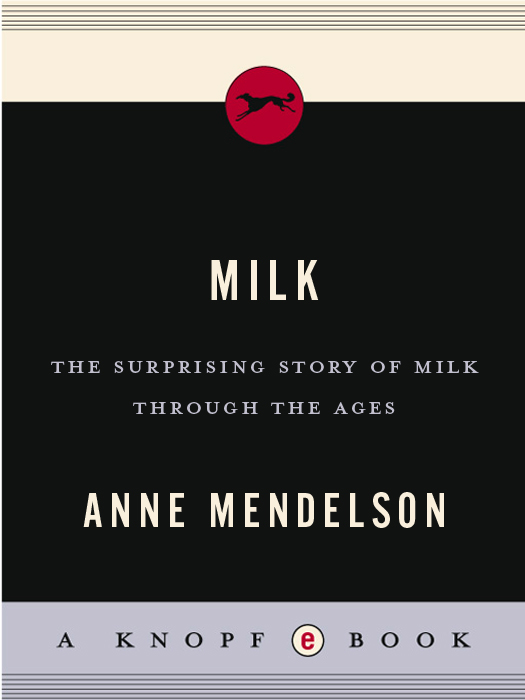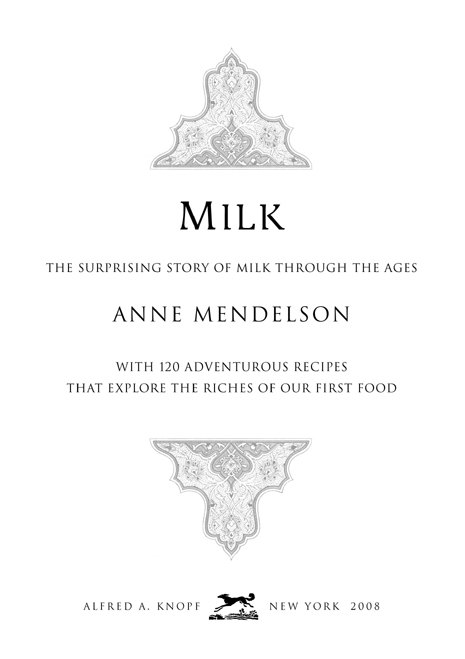ALSO BY ANNE MENDELSON
Stand Facing the Stove: The Story of the Women Who Gave America The Joy of Cooking
This Is a Borzoi Book Published by Alfred A. Knopf
Copyright 2008 by Anne Mendelson
All rights reserved. Published in the United States by Alfred A. Knopf, a division of Random House, Inc., New York, and in Canada by Random House of Canada Limited, Toronto.
www.aaknopf.com
Knopf, Borzoi Books, and the colophon are registered trademarks of Random House, Inc.
eBook ISBN: 978-0-385-35121-8
Hardcover ISBN: 978-1-4000-4410-8
Library of Congress Cataloging-in-Publication Data
Mendelson, Anne.
Milk : the surprising story of milk through the ages / by Anne Mendelson.1st ed.
p. cm.
Includes index.
ISBN 978-1-4000-4410-8
1. MilkHistory. 2. Cookery (Milk) I. Title.
SF 251. M 46 2008
641.37109dc22 2008019620
Manufactured in the United States
v3.1
IN MEMORIAM
M.I.
E.S.M.
ILLUSTRATIONS CREDITS
AMERICAN MUSEUM OF NATURAL HISTORY LIBRARY, SPECIAL COLLECTIONS (John Lockwood Kipling, Beast and Man in India , 1891)
COLLECTIONS OF THE NEW YORK PUBLIC LIBRARY, ASTOR, LENOX AND TILDEN FOUNDATIONS: ( Magasin pittoresque , 1837)
THE NEW-YORK HISTORICAL SOCIETY ( Harpers Weekly , August 17, 1878, NYHS negative #80839d)
THE STATE LIBRARY OF VICTORIA ( Australian Illustrated Weekly , November 11, 1893)
RALPH SELITZER, The Dairy Industry in America , 1976
HEDWIG DORN, Zur Sttze der Hausfrau , 1918
CONTENTS
MILK, MILCH ANIMALS, AND COOKING
Beginnings and Traditions
THE STORY OF MODERN MILK
Or, Is This What We Really Want?
RAW VS. PASTEURIZED, ORGANIC VS. CONVENTIONAL
A Minority Opinion
PREFACE
T his book has grown out of a lifelong love of milk and fresh dairy products. It is the culinary guidebook, dairy-chemistry-for-cooks primer, and eclectic recipe collection that I always vainly wished somebody had written. And it developed into something else that Id always wanted to find: a geographical-historical exploration of the worlds milky ways, including those that have shaped the modern American milk supply for better or worse.
Milk itself would have been a fascinating subject at any time in history. It is really and truly the First Food, at least for all members of the mammal class. The practice of milking was an anchor of many prehistoric civilizations, one of humanitys oldest and deepest bonds with domestic animals. The animals raised for the purpose are remarkable creatures, though they remain nearly invisible to most of the people who put milk on shopping lists. What they produce is a biochemical marvel that modern science has not yet finished analyzing. Its still-unplumbed complexities are exactly what make it irreplaceable in a huge number of the worlds cuisines. In the ancient world it often had religious significance as a ritual offering; in India it still has sacred associations. On a more earthbound level, it has figured tremendously in the farm econo-mies of most industrialized nations.
But Im not sure that any previous historical juncture would have been an equally fruitfulor fraughtmoment for stepping back to survey the many dimensions of milk, especially in the United States. It gets lots of headlines these days, some of them pleasanter reading than others. Among the most striking features of the early twenty-first-century dairy scene are:
Milk in many ways exemplifies an American love-hate relationship with food, an endless tug-of-war between exalting and demonizing things on the basis of medical claims and counterclaims.
It is also an alarming example of farming and processing technology somehow run amok, careening down ever more extreme paths with less and less connection to anything recognizable as real milk.
On a more encouraging note, a resurgence of small-scale dairying and dairy farming is proceeding under our noses just as many people become aware of a hunger for something not satisfied by featureless, taken-for-granted, mass-produced milk and fresh dairy products. Today we have unprecedented opportunities to taste milk, cream, butter, fresh cheeses, and other simple milk-derived foods made by, and for, people who know what flavor is.
Most powerfully of all, milk today represents a time of change in American culinary perspective, stemming from massive change in this nations ethnic makeup. Part of the impetus behind this book was my eagerness to share the voyages of culinary discovery that began for me in immigrant neighborhoods of northern New Jersey and ended by completely reshaping my understanding of milks place in world history, not to say the worlds kitchens. What I learned, in a nutshell, is that the usual American ways with milk and dairy products are only a narrow, anomalous sidetrack from something immensely larger, richer, and more ancient. Its my hope that other people will be as bowled over as I have been on seeing how much new Americans from diverse cooking traditions have to teach us about this humble substance.
My entry point to enlightenment was yogurtnot what Id known from American pop versions but the plain creamy yogurt that kept turning up as sauce, drink, condiment, and just all-around player in small Greek, Bosnian, Turkish, Israeli, Persian, Afghan, and Indian restaurants. Slowly it dawned on me that in simple fermented yogurt I was tasting something that might have been eaten or drunk by Old Testament patriarchs, Sumerian lawgivers, Homeric heroes, Hindu gods, or the flower of Persian chivalry. The uses I saw it being put to in modest little eateries made me realize how little Id really known about cooking with milk and dairy products.
As the larger picture opened up to me and I began trying to delve into chapters of the culinary past that no one else seemed to have written, I gradually arrived at a thoroughly rearranged world view of milk and things made from it.
In the first place, for most people in most parts of the world, milk has always been not a blandly innocuous food but one with decided flavors of its own. Historically it has come from not only cowswhich give the mildest-tasting milk of any dairy animalbut many other creatures, suited to different climates and geographies, whose milk has distinctive flavors peculiar to their species. (Goats milk is probably the most familiar example in the United States.) Furthermore, sweet milksweet in the sense of unsouredis not really as old a part of systematic foodways as milk fermented by friendly bacteria. Since prehistory, most of the milk consumed in all dairying regions of the world has been soured into yogurt or forms resembling todays cultured buttermilk. After all, fermentation is what happens to milk within a short time of milking unless you artificially forestall the event through refrigeration. And if you keep up with the story of lactose intolerance, you will realize that more human beings can more easily digest soured than sweet milk. To use an often-abused word, soured milk is in a very real sense a more natural food for people past the age of weaning. Just as crucial from a cooks point of view, soured milk plays off against other flavors with a many-dimensioned verve thats missing in the sweet counterpart.
Similarly, fresh cheeses made by a few simple forms of curd-setting are not just primitive precursors of real cheeses that have been ripened or aged. They are both older and more globally important than any other kinds of cheese. In their own right they are anything but blah and monotonous. Since ancient times they have been marked by infinite nuances of flavor and texture, depending on local environments, the animals that provide the milk, and the manner in which the curd is set. Fresh cheeses preserved through brining, like the Greek variety we call feta, are also more ancient than European-style ripened ones and figure prominently throughout a wider geographical rangein fact, most of the same geographical range as yogurt.


